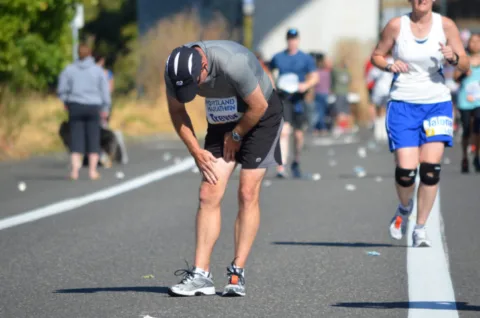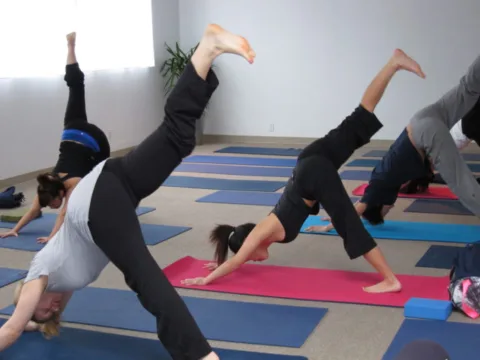I don’t want to talk about the I-word. I’d prefer to ignore it and get on with my training.
I have miles to log, races to run, and PR’s to break. I don’t have time for… well… you know… ‘that.’
Besides, that’s the stuff that happens to other runners, not me. Any problem I have I can train through it; I’m just good like that.
Those were pretty much my thoughts after recently completing a 12-hour race in which I placed 3rd.
Yep, It Happened To Me…
The following week on a short training run, I tore my Achilles. The MRI revealed that I had chronic tendinitis and a tear in my left Achilles.
I also had chronic tendinitis in my right Achilles.
While I was at it, I admitted to myself that I also had an IT Band issue that I had been wishing away.
All overuse injuries.
So yes, we need to talk about the I-word – injury.
It happens to everyone. It’s frustrating. It’s a setback. It can be downright devastating. It sucks.
Let’s put a positive side on this issue and discuss how to become an injury-free runner.
Overuse Injuries Can Be Prevented
Every ultrarunner has injuries from time to time. However, you don’t want an injury to be the result of careless training. You’ve put too much blood, sweat, and tears into your training to be sidelined by a mindless oversight.
Running injuries are the result of cumulative trauma to your muscles, tendons, ligaments, or joints.
Overuse injuries such as tendonitis, tears, stress fractures, plantar fasciitis and IT Band issues can be prevented through smart training.
I think we would all agree that the time and energy spent to prevent an injury isn’t nearly as difficult or demanding as being completely sidelined, and time spent in treatment and rehab. An ounce of prevention is a better than a pound of cure.
Muscles, joints and bones need time to adapt to the repeated impact stresses placed on them. If the impact stress is great enough, and the time allowed for repair and remodeling is not long enough, an overuse injury results.
Are you a new runner?
Are you returning to running after being away from it a while?
Are you a multi-sport athlete who wants to focus on running?
Are you transitioning from the marathon distance to ultra-running distances?
If so, be aware of the 10% training mileage principle. However, to be fair, there are some differences of opinion on the 10% rule. In any event, try to avoid the “too much too soon” compulsion.
And don’t excessively increase your mileage each week. Rapid increases in mileage or changes in intensity from one week to the next will eventually result in overuse injury.
2 Things You Can Do To Avoid Running Injuries
Once you have a reasonable training schedule that is mindful of this 10% mileage principle, there are a few tips that will help you prevent overuse injuries.
#1 – Improve your flexibility.
Stretching is not the magic wand that will prevent injuries or improve your performance as a runner. However, there are cases where certain stretching routines are useful and probably even necessary.
- Here’s a simple stretching routine for those who deal with a tight IT Band or suffer from Iliotibial Band Syndrome.
- Here are a few simple stretches that relate to Achilles tendinitis and plantar fasciitis.
There are mixed opinions on whether static stretching helps prevent injuries and improve running performance.
However, there is widespread belief that strength training, dynamic stretching, and balance exercises do aid the runner in injury prevention and better running performance. Along these lines, many runners have incorporated yoga into their training because it combines those 3 elements.
#2 – Do self-massage.
Muscle soreness and tightness after a long run are common. Self-massage can help speed the recovery process.
Technically called myofascial release, it can help loosen tight muscles, promote healing blood circulation, and break up scar tissue and soft tissue adhesions.
If you have any trigger points in your legs (especially tight and tender to the touch), massage can help release that tight spot.
- You can perform self-massage on yourself before you run as part of your warm-up. Just make sure you keep the pressure lighter than usual so you don’t make yourself sore. After you run, you can be a little more aggressive.
- There are many different self-massage routines you can experiment with.
There is a lot of useful information for runners when it comes to strategies and tips for injury prevention.
I hope this article motivates you to get serious about other aspects of your ultramarathon training — rather than just the miles you are putting in each week.
Exploring the links in this article will help educate you to be an injury-free runner.





